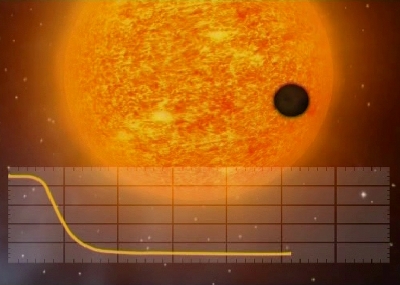The Exoplanets Rising conference, now in progress at the Kavli Institute for Theoretical Physics (UC Santa Barbara), is offering a treasure trove of online material, including one I’m currently watching, a presentation by Magali Deleuil (Astronomy Observatory of Marseilles Provence) on CoRoT results. It’s extraordinary for those of us who couldn’t be at the conference to have quick access to talks by the likes of Michel Mayor, Lisa Kaltenegger, Geoff Marcy and Debra Fischer on everything from transit puzzles to metallicity trends.

Interesting to note that CoRoT is now, according to Deleuil, at the end of the ‘nominal lifetime of the instrument,’ although CoRoT’s extended mission has been approved and the spacecraft will remain in operation until March of 2013. Deleuil says that thirteen observing runs have been completed, totaling 75,000 light curves from ‘stares’ of more than 60 days and 50,000 light curves from 25-day stares. Since February of 2007, 150 planetary candidates have emerged, fifty of which have transit depths of less than 3 milli-magnitudes (mmag).
Image: One of the methods for detecting exoplanets is to look for the drop in brightness they cause when they pass in front of their parent star. Such a celestial alignment is known as a planetary transit. Such transits block a tiny fraction of the light that COROT is able to detect. Credit: CNES.
‘Transit depth’ refers to the amount of the star’s light that is blocked by the planet. The largest transit depth yet recorded belongs to HD 189733b, a ‘hot Jupiter’ in Vulpecula that shows a depth of approximately 3 percent. Transiting gas giants generally have transit depths on the order of 1 percent. All this is useful because transit depth can be used to calculate the size of the planet. The depth is equal to the ratio of the area of the planet to the area of the star, and we know the rough size of the star because we know its spectral type.
The 3 mmag Deleuil mentioned in her talk works out to just 0.3 percent, a tribute to the sensitivity of the instrument in detecting smaller worlds. Just how sensitive is CoRoT? Deleuil says the instrument can detect Neptune-size planets no matter what the magnitude of the star, but a two Earth-radii planet requires stars brighter than 14th magnitude. Between Kepler and CoRoT we are going to build a useful catalog of ‘super Earths’ as we keep homing in on a true Earth twin.
I have a lot of listening ahead — David Charbonneau (Harvard CfA) is next on my list with an overview of transit discoveries, and I want to check Paul Kalas (UC Berkeley) on direct detection results. Chris Sotin (JPL) speaks this morning on ocean worlds and Lisa Kaltenegger (Harvard CfA) this afternoon on habitability and biosignatures. Abstracts and poster presentations are also available on the Kavli site, making it a real watering hole for those following the exoplanet hunt.



Sounds very promising. Im looking forward to when they push back the limitations of sampling bias and more easily pick up terrestrial worlds.
Gas giants of course are the easiest to detect, and theres the consideration of gas giant moons. I wonder if we’re equipped to find exomoons?
Administrator,
After having had a chance to look the slides for Geoff Marcy’s talk in which it was mentioned that the NASA/UC Eta-Earth survey has found an occurance rate of ~8% of super-Earths around GK stars in orbital periods of less than 20 days, I was struck by the difference between that occurence rate and the ~50% occurence rate of super-Earths around GK stars (periods less than 50 days) found by the Geneva team (still unpublished). Does this, to your knowledge, imply that there is a looming tension between the Swiss team’s results and the US team’s results for the occurence rate of low mass exoplanets around solar type stars?
Good question! One thing to keep in mind re Marcy’s figure is that, as you point out, he’s confining this to orbital periods of less than 20 days, while the Geneva team includes lengthier periods. However, like you I was struck by the fact, as I went through the ‘Exoplanets Rising’ talks, that we’re seeing somewhat different projections from the various teams, which reminds us how much play is still incorporated in these numbers. Different equipment, different parameters, but also a lot that we still have to nail down by expanding our datasets.
Administrator,
Indeed, the Swiss team has been taking data using the HARPS instrument for longer than Marcy’s team’s Keck observations so they are sensitive to planets in longer period orbits. Also, Geoff Marcy himself told the audience, in response to a question about the alleged discrepancy, that his team is sensitive to planet masses between 10-100 Earth-masses so part of the discrepancy may arise from the fact that the Swiss team is sensitive to a greater number of planets below 10 Earth-masses. I guess only time will tell; in fact, the Kepler mission should easily be able to ascertain whether or not there is a discrepancy between these two teams, as short period Super-earths will not present a huge identification challenge to this sensitive photometer.